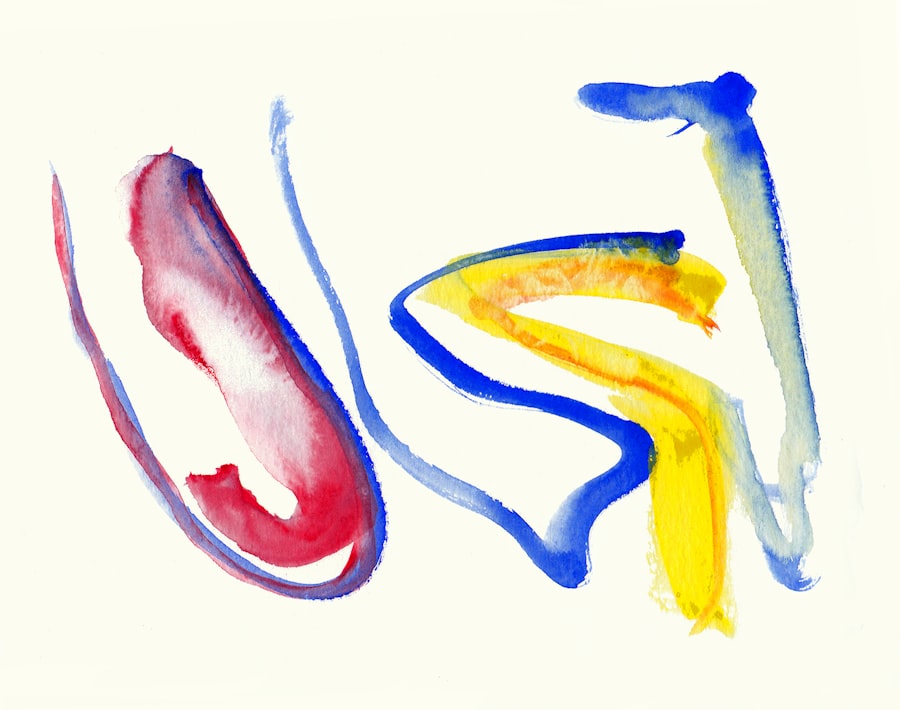Heuristics are mental shortcuts that allow individuals to make decisions and solve problems quickly and efficiently. These cognitive strategies simplify complex tasks by reducing the amount of information one needs to process, thereby facilitating faster decision-making. The term “heuristic” originates from the Greek word “heuriskein,” which means “to discover.” In essence, heuristics enable people to navigate through uncertainty and ambiguity by relying on experience, intuition, and rules of thumb.
They are particularly useful in situations where time is limited or when individuals face overwhelming amounts of information. Heuristics operate on the principle of bounded rationality, a concept introduced by Herbert Simon, which posits that while individuals strive to make rational decisions, their cognitive limitations often hinder them. Instead of exhaustively analyzing every possible option, people use heuristics to arrive at satisfactory solutions.
For example, when choosing a restaurant, one might rely on the heuristic of selecting a place with a high number of positive reviews rather than meticulously evaluating every menu item and price point. This approach not only saves time but also leverages social proof as a guiding factor in decision-making.
Key Takeaways
- Heuristic is a mental shortcut or rule of thumb that helps in making quick decisions and solving problems efficiently.
- Heuristic plays a crucial role in problem solving and decision making by allowing individuals to make judgments based on limited information and previous experiences.
- In business and entrepreneurship, heuristic can be harnessed to make quick and effective decisions, identify opportunities, and navigate uncertainties.
- Heuristic thinking can influence creativity and innovation by allowing individuals to break free from traditional thinking patterns and explore new ideas and solutions.
- Cognitive biases can be overcome through heuristic thinking by challenging assumptions, seeking diverse perspectives, and being open to alternative solutions.
The Role of Heuristic in Problem Solving and Decision Making
In the realm of problem-solving, heuristics play a pivotal role by providing frameworks that help individuals break down complex issues into manageable parts.
This method allows individuals to focus on actionable steps rather than becoming overwhelmed by the problem’s intricacies.
By concentrating on smaller, achievable tasks, individuals can maintain motivation and momentum toward resolving larger issues. Moreover, heuristics are instrumental in decision-making processes across various domains, including finance, healthcare, and everyday life. In finance, investors often rely on heuristics such as the “availability heuristic,” where they make judgments based on readily available information or recent experiences.
For example, if an investor has recently heard about a tech company’s success, they may be more inclined to invest in similar companies without conducting thorough research. While this can lead to quick decisions, it also underscores the importance of being aware of potential biases that may arise from relying solely on heuristics.
Harnessing the Power of Heuristic in Business and Entrepreneurship

In the business world, heuristics can be powerful tools for entrepreneurs and managers seeking to navigate uncertainty and make strategic decisions. Entrepreneurs often face a myriad of challenges, from market entry strategies to product development. By employing heuristics such as “trial and error,” they can experiment with different approaches without committing extensive resources upfront.
This iterative process allows for rapid learning and adaptation, which is crucial in dynamic markets where consumer preferences can shift rapidly. Additionally, heuristics can enhance decision-making in organizational settings. For instance, the “80/20 rule,” also known as the Pareto Principle, suggests that 80% of outcomes result from 20% of causes.
By focusing on key drivers of success rather than spreading resources too thinly across numerous projects, organizations can achieve greater efficiency and effectiveness in their operations.
The Influence of Heuristic on Creativity and Innovation
| Heuristic | Creativity Impact | Innovation Impact |
|---|---|---|
| Analogical Thinking | High | High |
| Prototyping | Medium | High |
| Brainstorming | High | Medium |
| Visual Thinking | High | Medium |
Heuristics not only aid in decision-making but also foster creativity and innovation by encouraging divergent thinking. When individuals employ heuristics such as “brainstorming” or “mind mapping,” they can generate a wide array of ideas without the constraints of conventional thinking. This freedom to explore various possibilities often leads to novel solutions and creative breakthroughs.
For example, companies like Google have embraced heuristic approaches in their innovation processes by allowing employees to dedicate time to pursue personal projects, resulting in products like Gmail and Google Maps. Furthermore, heuristics can help overcome mental blocks that stifle creativity. The “analogical reasoning” heuristic involves drawing parallels between seemingly unrelated concepts or fields.
By making connections between disparate ideas, individuals can unlock new perspectives and insights that drive innovation. For instance, biomimicry—where designers draw inspiration from nature—has led to groundbreaking advancements in technology and engineering by applying natural principles to human challenges.
Overcoming Cognitive Biases through Heuristic Thinking
While heuristics are valuable tools for decision-making, they can also lead to cognitive biases that distort judgment. Cognitive biases are systematic patterns of deviation from norm or rationality in judgment, often resulting from reliance on heuristics. For example, the “confirmation bias” occurs when individuals seek out information that confirms their preexisting beliefs while ignoring contradictory evidence.
This bias can hinder critical thinking and lead to poor decision-making. To mitigate the impact of cognitive biases, individuals can adopt a more reflective approach to heuristic thinking. By consciously questioning their assumptions and considering alternative viewpoints, they can counteract biases that may cloud their judgment.
Techniques such as “devil’s advocacy,” where one deliberately challenges prevailing opinions, can help uncover blind spots and promote more balanced decision-making. Additionally, fostering a culture of open dialogue within teams encourages diverse perspectives that can counteract individual biases.
Leveraging Heuristic for Personal Development and Growth

Heuristics can also be instrumental in personal development by providing frameworks for self-improvement and goal-setting. Individuals often face challenges in setting and achieving personal goals due to overwhelming choices or fear of failure. By employing heuristics such as “SMART goals” (Specific, Measurable, Achievable, Relevant, Time-bound), individuals can create clear pathways toward their objectives.
This structured approach not only enhances motivation but also increases accountability. Moreover, heuristics can facilitate habit formation and behavioral change. The “two-minute rule,” which suggests that any task should take less than two minutes to complete immediately if possible, encourages individuals to tackle small tasks without procrastination.
This simple heuristic can lead to significant progress over time as small actions accumulate into larger achievements. By integrating such heuristics into daily routines, individuals can cultivate positive habits that contribute to long-term personal growth.
The Impact of Heuristic on Leadership and Management
In leadership and management contexts, heuristics play a crucial role in shaping organizational culture and guiding decision-making processes. Effective leaders often rely on heuristics to navigate complex interpersonal dynamics and foster team cohesion. For instance, the “situational leadership” heuristic emphasizes adapting leadership styles based on team members’ readiness levels.
By recognizing when to provide direction versus when to delegate authority, leaders can empower their teams while ensuring alignment with organizational goals. Furthermore, heuristics can enhance strategic planning by enabling leaders to identify patterns and trends within their industries. The “SWOT analysis” (Strengths, Weaknesses, Opportunities, Threats) serves as a heuristic framework for assessing an organization’s internal capabilities and external environment.
By systematically evaluating these factors, leaders can make informed decisions about resource allocation and strategic initiatives that align with their vision for the organization.
Practical Strategies for Applying Heuristic in Everyday Life
To effectively apply heuristics in everyday life, individuals can adopt several practical strategies that enhance decision-making and problem-solving capabilities. One approach is to create checklists for routine tasks or decisions. Checklists serve as cognitive aids that streamline processes by ensuring essential steps are not overlooked while allowing for quick execution based on established criteria.
Another strategy involves setting time limits for decision-making processes. By imposing deadlines on choices—whether selecting a meal at a restaurant or making a significant purchase—individuals can prevent overthinking and analysis paralysis. This technique encourages reliance on intuitive judgments while still allowing for thoughtful consideration of options.
Additionally, engaging in reflective practices such as journaling or meditation can help individuals become more aware of their thought processes and biases. By regularly examining their decision-making patterns and outcomes, they can refine their use of heuristics over time, leading to more effective choices in both personal and professional contexts. Incorporating these strategies into daily routines empowers individuals to harness the power of heuristics effectively while minimizing potential pitfalls associated with cognitive biases.
As people become more adept at utilizing these mental shortcuts, they can navigate life’s complexities with greater confidence and clarity.
Heuristics, as a method of problem-solving and learning, often intersect with philosophical approaches that emphasize critical thinking and inquiry. A related article that delves into a philosophical method akin to heuristic thinking is “Exploring Socratic Philosophy and the Socratic Method: Socrates on Virtue.” This article discusses the Socratic Method, a form of cooperative argumentative dialogue that stimulates critical thinking and illuminates ideas, much like heuristic techniques aim to simplify complex problem-solving. For more insights, you can read the full article by following this link.





















+ There are no comments
Add yours